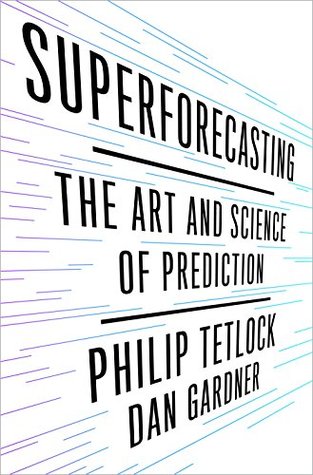More on this book
Community
Kindle Notes & Highlights
all we have to do is set a clear goal—accuracy!—and get serious about measuring.
if it is sustained “it’s the difference between a consistent winner who’s making a living, or the guy who’s going broke all the time.”
what they thought didn’t matter. It was how they thought.
superforecasting demands thinking that is open-minded, careful, curious, and—above all—self-critical. It also demands focus.
It was the absence of doubt—and scientific rigor—that made medicine unscientific and caused it to stagnate for so long.
“A bat and ball together cost $1.10. The bat costs a dollar more than the ball. How much does the ball cost?”
in science, the best evidence that a hypothesis is true is often an experiment designed to prove the hypothesis is false, but which fails to do so.
“What would convince me I am wrong?”
The key is doubt.
intuition and analysis—“blink” versus “think”
ten thousand hours of practice it takes to learn those fifty thousand to one hundred thousand chess patterns.
I usually know what I am going to do after 10 seconds; the rest is double-checking.”23 Carlsen respects his intuition, as well he should, but he also does a lot of “double-checking” because he knows that sometimes intuition can let him down and conscious thought can improve his judgment.
Why did you assume that an opponent who raises the bet has a strong hand if you would not raise with the same strong hand?
Quit pretending you know things you don’t and start running experiments.
So regression to the mean is an indispensable tool for testing the role of luck in performance: Mauboussin notes that slow regression is more often seen in activities dominated by skill, while faster regression is more associated with chance.
If their results were entirely decided by skill, there would be no regression:
He calls it the “outside view”—in contrast to the “inside view,” which is the specifics of the particular case. A few minutes with Google tells me about 62% of American households own pets. That’s the outside view here. Starting with the outside view means I will start by estimating that there is a 62% chance the Renzettis have a pet.
So a forecaster who starts by diving into the inside view risks being swayed by a number that may have little or no meaning. But if she starts with the outside view, her analysis will begin with an anchor that is meaningful. And a better anchor is a distinct advantage.
Coming up with an outside view, an inside view, and a synthesis of the two isn’t the end. It’s a good beginning. Superforecasters constantly look for other views they can synthesize into their own.
A key part of his success, he has often said, is his mental habit of stepping back from himself so he can judge his own thinking and offer a different perspective—to himself.14
seek out evidence that cuts both ways.
For superforecasters, beliefs are hypotheses to be tested, not treasures to be guarded.
“Nothing is one hundred percent,”
“There is an 80% chance that something will happen” means there is a 20% chance it won’t,
the average forecaster who sticks with the tens—20%, 30%, 40%—is less accurate than the finer-grained forecaster who uses fives—20%, 25%, 30%—and still less accurate than the even finer-grained forecaster who uses ones—20%, 21%, 22%.
Science doesn’t tackle “why” questions about the purpose of life. It sticks to “how” questions that focus on causation and probabilities.
“I would attribute my GJP success so far, such as it has been,” Devyn wrote, “to good luck and frequent updating.”
“When the facts change, I change my mind,”
Both under- and overreaction can diminish accuracy. Both can also, in extreme cases, destroy a perfectly good forecast.
superforecasters may have a surprising advantage: they’re not experts or professionals, so they have little ego invested in each forecast.
The best way to do that is by updating often but bit by bit.
try, fail, analyze, adjust, try again—is fundamental to how all of us learn, almost from the moment we are born.
she cared more about learning than getting top grades.
teams were 23% more accurate than individuals.
encouraged people to challenge each other respectfully, admit ignorance, and request help.
The more diverse his team, the greater the chance
“You have to have tremendous humility in the face of the game because the game is extremely complex, you won’t solve it, it’s not like tic-tac-toe or checkers,” she says. “It’s very hard to master and if you’re not learning all the time, you will fail.
it’s quite possible to think highly of yourself and be intellectually humble. In fact, this combination can be wonderfully fruitful.
the superforecasters not only paid attention to the time frame in the question but also thought about other possible time frames
The “black swan” is therefore a brilliant metaphor for an event so far outside experience we can’t even imagine it until it happens.
black swans, and black swans alone, determine the course of history. “History and societies do not crawl,” he wrote. “They make jumps.”
keep score.”
Bill knows what he doesn’t know, and respects those who do.
Ten Commandments for Aspiring Superforecasters
The more degrees of uncertainty you can distinguish, the better a forecaster you are likely to be.


